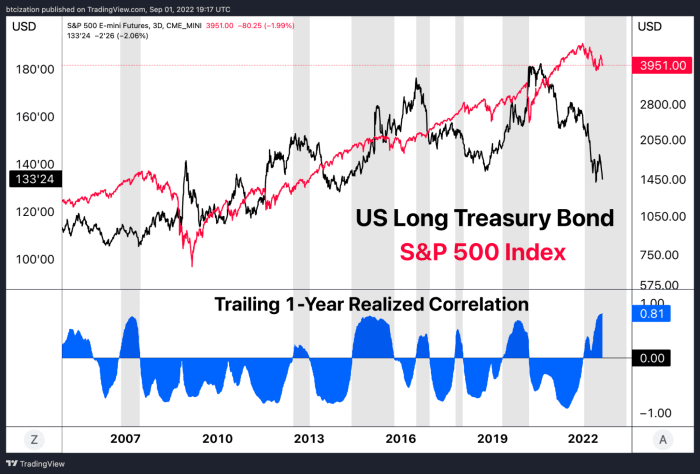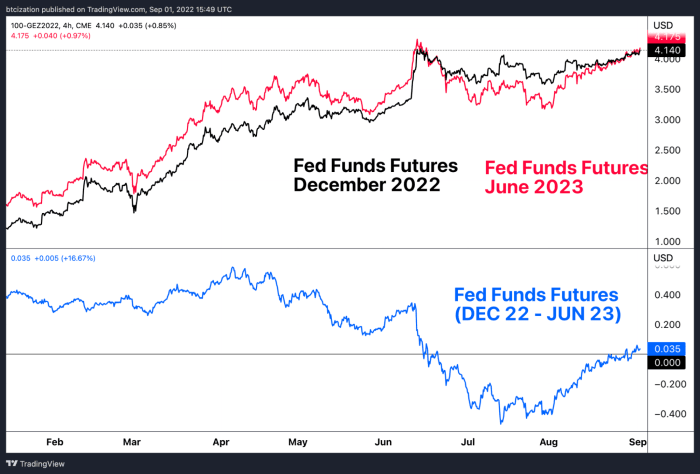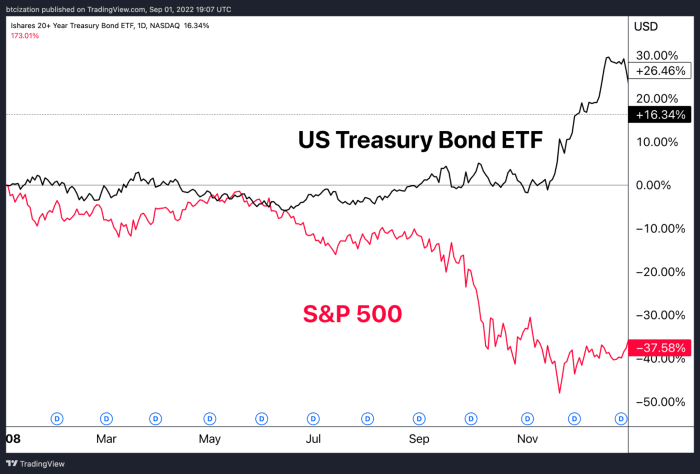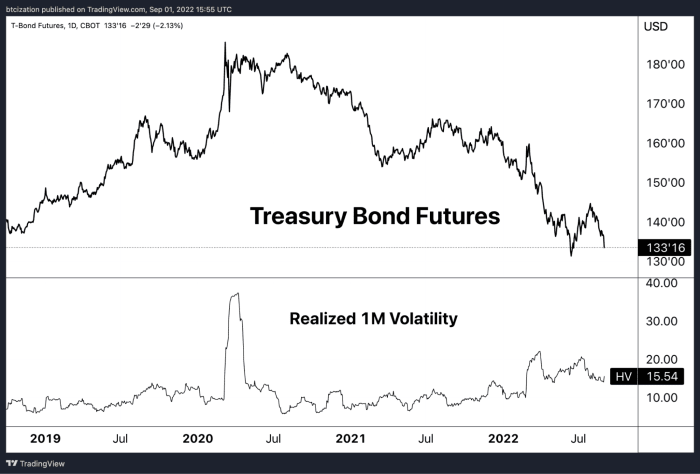Inflationary Bear Market Spells Trouble – Bitcoin Magazine

Below is an excerpt from a recent issue of Bitcoin Magazine Pro, Bitcoin Magazine’s premium markets newsletter. To be among the first to receive this insight and other market analysis on the bitcoin chain straight to your inbox, subscribe now.
Prices on the way up
Yesterday’s initial release of jobless claims data came in below expectations, signaling a stronger labor market that is another “good news is bad news”.
We can see some of these developments playing out via the Eurodollar Futures curve where the market’s expected federal funds rate is steeper (more rate hikes), now expected to be above 4% in the second half of 2023. That is in line with the Federal Reserve’s own projections as they have told the market:
The S&P 500 is now facing its fifth consecutive daily red light and is below some key technical areas that held as support.
After months of compression, volatility is also on the rise with the VIX starting to climb higher along with higher 1-month realized volatility across bitcoin, stocks and Treasury futures.
As we head into another long holiday weekend, it has been an eventful day in the market with weakness and increased selling pressure evident across a number of asset classes. Some of the key moves have been continued DXY strength as major market currencies continue to bleed against the US dollar and the rise in Treasury yields with the US 10-year above 3.25%. Interest rates across major European economies (Germany, Italy, Spain and Greece) are also moving higher.
The “interest rates have peaked” argument has so far been a mistake or at least early call, as the market has reverted to its consensus expectations of a Federal Reserve pause or pivot time frame into early 2023. The thesis of a deflationary present and rapid return to a 2% inflation target continues to look further away as many of the Federal Reserve board members publicly emphasize the need to stop inflation at all costs in a media show-style tour, acknowledging that core problems have not abated. Jerome Powell’s Jackson Hole speech and Neal Kashkari’s recent Oddlots performance are clear examples of this.
Inflationary bear market
Comparisons with 2008 are incorrect due to different inflation prospects and macroeconomic background.
2008 was a credit-financed boom that turned into deflation. 2022 is an inflationary bear market, where both stocks and bonds have sold out at the same time. Much of the legacy financial and portfolio allocation is built on the assumption that bonds and stocks will not have a positive correlation to the downside, and portfolio managers “diversify” accordingly.
Shares and bonds have been positively correlated over the past year in a period where shares Went down. This is a first for the fiat currency era after quantitative easing.

In a first for the post-QE fiat currency era, stocks and bonds have become positively correlated as stocks decline.
The positive correlation to the downside resurfaced yesterday, as bonds were sold on a massive decline. At the time of writing, US Treasury bond futures are -1.99% for an asset that traded with a volatility of 15.54% in the last month.






